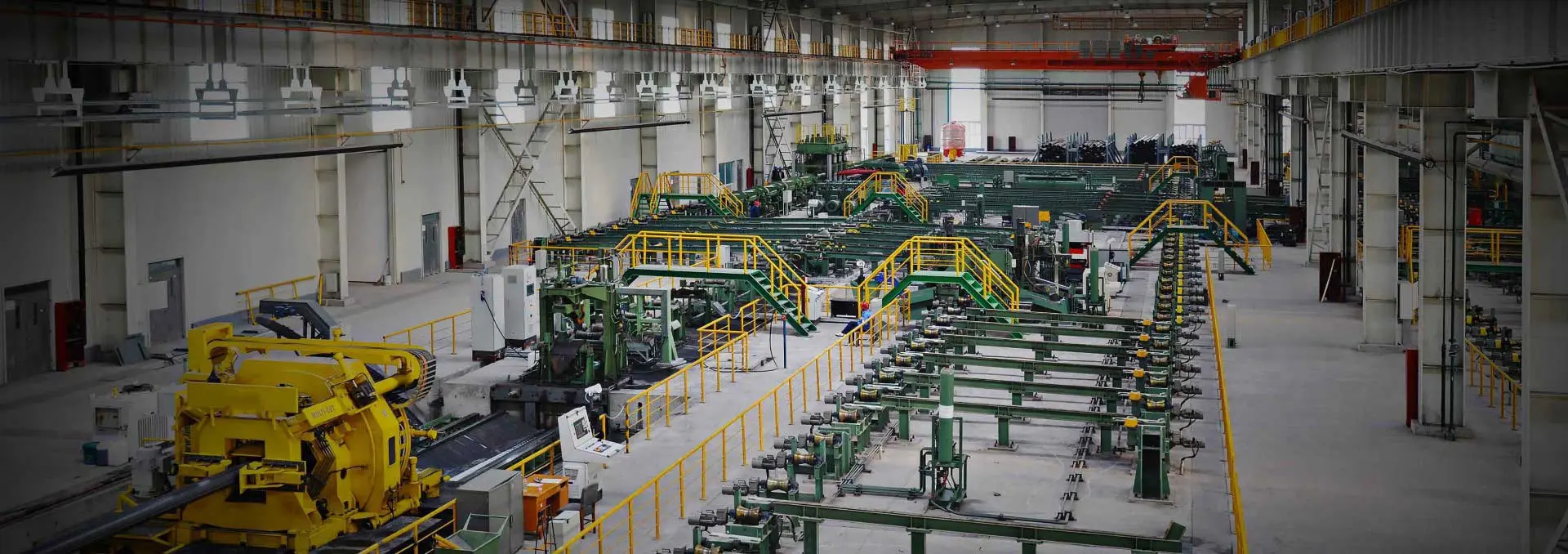JIS G3452 specifies carbon steel pipes intended for piping systems operating under relatively low working pressure, handling media such as steam, water (excluding potable water supply), oil, gas, and air.
Equivalent/Related Standards: KS D3507, ASTM A53, API 5L, DIN 2440, DIN 2441, BS 1387, and BS 3601.
This article provides an overview of the production methods used for JIS G3452 carbon steel pipes.
Manufacturing Method of JIS G3452 Carbon Steel Pipe
A) Pipes shall generally be delivered as manufactured. Cold-finished tubes must be annealed after production.
B) Pipes with a nominal diameter of 300A or smaller shall have either threaded or plain ends. Pipes with a nominal diameter of 350A or larger shall have plain ends. If bevel ends are required, and no specific shape is designated, the configuration shall be determined by agreement between supplier and purchaser.
C) For pipes produced by electric resistance welding, external and internal weld beads shall be removed to maintain a smooth contour unless otherwise specified. If internal bead removal is impractical, it may remain.
D) Threaded pipes shall have tapered ends in accordance with JIS B0203. One socket conforming to JIS B2301 or JIS B2302 shall be fitted to one end, with the free end protected by a thread protection ring or an equivalent device. At the purchaser’s request, the socket may be omitted. Tapered thread inspection shall follow JIS B0253.
E) Galvanizing classification shall comply with Table 1. Where zinc plating is applied, it shall be carried out prior to threading. Black tubes and sockets that have passed inspection shall be thoroughly cleaned (e.g., by blasting or pickling) and then hot-dip galvanized.
F) The zinc used for galvanizing shall meet JIS H2107 distilled zinc bare metal class 1 requirements, or be of equivalent or higher quality.
G) General provisions for zinc plating shall conform to JIS H 8641.
FAQs: JIS G3452 Carbon Steel Pipe
Q1: What is JIS G3452 carbon steel pipe used for?
A1: JIS G3452 pipes are primarily used for piping under relatively low working pressure, carrying steam, oil, gas, air, and water (excluding potable water supply).
Q2: How does JIS G3452 differ from JIS G3454 or JIS G3455?
A2: JIS G3452 is for low-pressure service, while JIS G3454 and JIS G3455 are designed for higher pressure and temperature applications, such as boiler and heat exchanger tubes.
Q3: What are the available manufacturing methods for JIS G3452 pipes?
A3: They can be manufactured as seamless pipes or welded pipes. Cold-finished pipes are typically annealed after production.
Q4: What surface treatments are applied to JIS G3452 pipes?
A4: Depending on application requirements, pipes can be supplied in black (bare), varnished, galvanized, or with anti-corrosion coatings.
Q5: What are the typical end types of JIS G3452 pipes?
A5: Ends may be plain, threaded, or beveled, depending on the nominal size and customer specifications.
Q6: Which international standards are equivalent to JIS G3452?
A6: Equivalent standards include ASTM A53, API 5L, KS D3507, DIN 2440/2441, and BS 1387 / BS 3601.
Q7: What inspections are required for JIS G3452 pipes?
A7: Pipes undergo dimensional checks, hydrostatic testing, and, where applicable, non-destructive testing to ensure compliance with quality standards.
Q8: Can JIS G3452 pipes be used for drinking water supply?
A8: No, the standard specifically excludes potable water supply applications. For that purpose, other standards such as JIS G3459 (stainless steel pipes) are more suitable.
For more: JIS G3452 carbon steel pipe

 English
English Español
Español




 Tel : +86-18565811709
Tel : +86-18565811709 Email :
Email : 
 News
News




